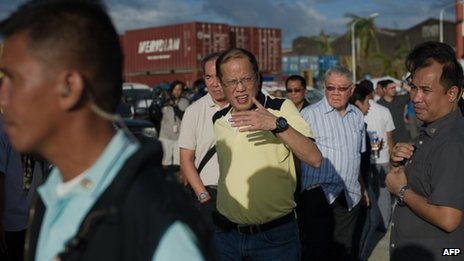Leadership, Disaster Response and Crisis Communications: Weathering the PR Storm
Asia-Pacific, crisis communications, disaster response, GLOBALHealthPR, leadership, management, Philippines, public health, Typhoon Haiyan
Analyzing recent disaster communications, both successful and failed, can provide important insights for managers and politicians alike when facing the unexpected. 
The hours and days immediately following a profound disaster can shape institutional and political reputations for years to come. Events such as the tragedy of Typhoon Haiyan in the Philippines can overwhelm the under-prepared; even country leaders can fall victim to insufficient planning. Lack of preparation can lead to a lacking response to disaster, as leaders scramble to answer the public’s justifiable demand for information and assistance. In recent years, three characteristics of outstanding disaster emergency communications have emerged.
Establish an integrated crisis communications plan before disaster strikes.
Communications should be integrated into any crisis response plan. Don’t wait until a natural disaster occurs to begin developing your communications plan.

Credit: Nicolas Asfouri / AFP – Getty Images
In the case of Haiyan, President Aquino’s public announcement from his presidential palace one week after the typhoon hit did little to ease the public fear and uncertainty during the growing humanitarian disaster. On Monday, Aquino attempted to address criticism by pledging to stay in Tacloban until progress had been made in the recovery process. The impact this may have on the recovery process remains unclear.
The spread of misinformation can stem from an insufficient crisis communications plan. The Japanese government’s response to the Fukushima disaster is a textbook example of how unclear messaging can lead to exaggerated perceptions of health risks. Gerry Thomas, who runs the Chernobyl Tissue Bank (CTB) at Imperial College London, stated, “They’ve got a huge problem out there — largely a PR problem; it’s not a health problem because none of this is going to do anything health-wise.”
Lead transparently with a unified message.
Most importantly, a unified message – free from political or company bias – is essential when responding to a crisis. All too often, political rivalries and blame games hamper relief efforts and damage an official’s reputation. In the wake of Haiyan, there have been widespread reports of infighting between national government officials and local politicians. Questioned by journalists, Tacloban’s mayor strongly criticized the central government, stating, “Perhaps I can say that Metro Manila was prepared for Yolanda because the typhoon didn’t hit it…”
MIT experts have cited infighting as a key reason why relief efforts were bogged down after Hurricane Katrina caused widespread despair along the Gulf Coast of the United States in late summer 2005. MIT supply chain expert Yossi Sheffi, author of The Resilient Enterprise: Overcoming Vulnerability for Competitive Advantage, writes, “Instead of taking decisive actions, city, state, and federal officials argued with one another; communications broke down, and too many civil servants … did not have the urgency or the passion required.” When lives are on the line, it’s crucial to stay set aside politics and biases in favor of unification and the greater good.
Give credit where credit is due.
True heroes are often everyday citizens – first responders and survivors—who fight against all odds to survive and help others. These achievements should not go unnoticed and may be a positive focus for messaging. For example:
- Following a deadly 2007 Virgin train crash, CEO Sir Richard Branson spoke only positively of staff and responders. By directing his praise toward the quick reactions of the crews, including the train engineer, he took a risk that paid off; according to Communicate magazine, Branson emerged from the interview with an enhanced reputation.
More recently, Australian Prime Minister Tony Abbott followed a similar strategy in his response to the Blue Mountain wildfires. He commented, “These are ordinary people who, on an extraordinary day, come together to support their community and to protect their fellow Australians. We are incredibly lucky to have them.” Abbott enjoyed a spike in his approval ratings.
When forming disaster response plans, it is essential to not only have a plan, but also to be prepared to communicate that plan in a transparent way. As we can see with these case studies, crisis response can either enhance or sink a leader’s reputation. Disaster response is just as much a communications mission as it is an aid and recovery mission.
To donate to ongoing relief efforts, please visit www.redcross.org.
